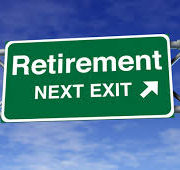Is the 4% retirement rule right for you?
Meet the 4% rule
The 4% rule has been around for a long time. It was introduced by financial advisor Bill Bengen in 1994. It says that you can withdraw 4% of your nest egg in your first year of retirement, adjusting future withdrawals for inflation. This withdrawal strategy assumes a portfolio of 60% in stocks and 40% in bonds, and it’s designed to make your money last through 30 years of retirement.
Here’s how it works: Imagine that you’ve saved $500,000 by the time you retire. In your first year of retirement, you can withdraw 4%, or $20,000. In year two, you will need to adjust that rate by inflation. Let’s say that inflation over the past year was at its long-term historic rate of 3%. You’ll now multiply your $20,000 withdrawal by 1.03 and you’ll get your second year’s withdrawal amount of $20,600. The following year, if inflation is still around 3%, you’ll multiply that by 1.03 and get your next withdrawal amount of $21,218.
So what’s the problem with this seemingly super-helpful rule? Well, unfortunately, several things.
Interest rates have fallen: For starters, remember that the rule was created more than 20 years ago, when interest rates were higher. Mortgage rates in 1994 were in the 8% range. In such an environment, the bond portion of a portfolio would have been generating more income than bonds today.
It assumes a certain asset allocation: Then there’s the rule’s assumption that your portfolio will be split 60-40, respectively, between stocks and bonds. You might not have or want that allocation. If your portfolio is split 50-50, or you have 75% of it in stocks, then the 4% rule won’t work as advertised.
People are living longer: Many people are living much longer lives. The 4% rule aims to make your money last for 30 years, but if you retire at 62 and live to 96, your retirement will be 34 years long and you might be quite pinched in your last years.
Should you use the 4% rule?
Clearly, the 4% rule is flawed. But you don’t necessarily have to throw it out altogether.
If you think you stand a decent chance of having a retirement that’s more than 30 years long, you can be more be more conservative, perhaps using a 3% or 3.5% withdrawal rate in the early years of retirement. Don’t be too rigid about it, though. If the market grows briskly in your first few years, you can re-evaluate and perhaps increase your withdrawals.
It is a good idea to reassess your financial situation regularly during your retirement. For example, if you’re 80 and you don’t think you’ll be around in a decade and your coffers are rather full, you could start withdrawing and enjoying more each year, or just plan to leave more to your loved ones.
We all need to plan carefully for retirement.









